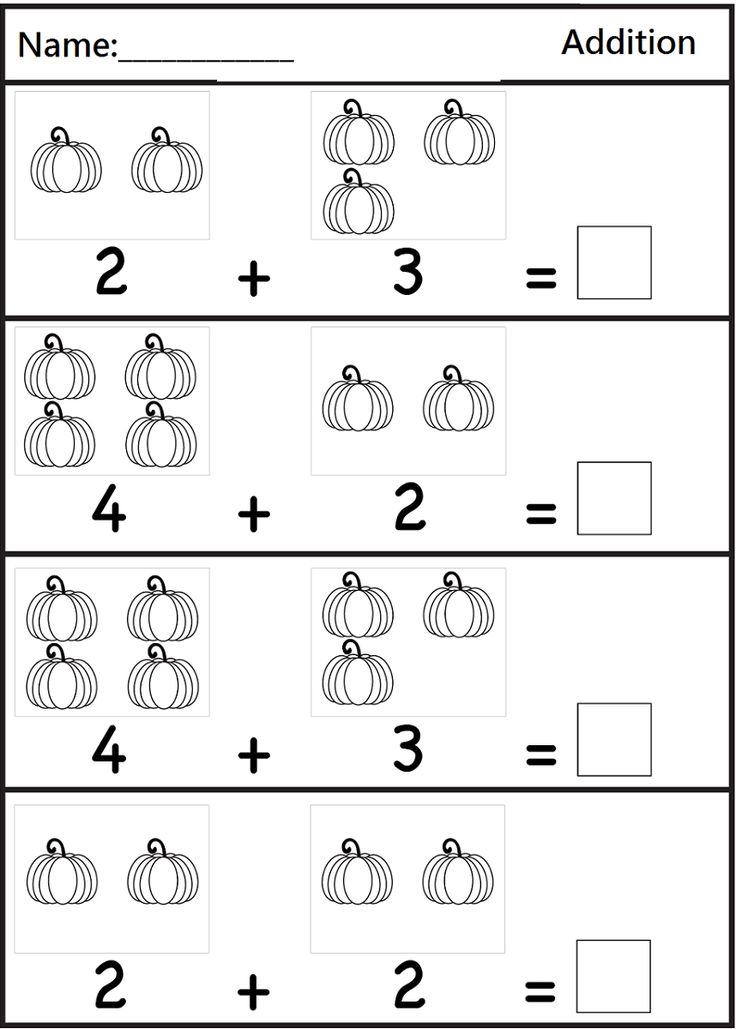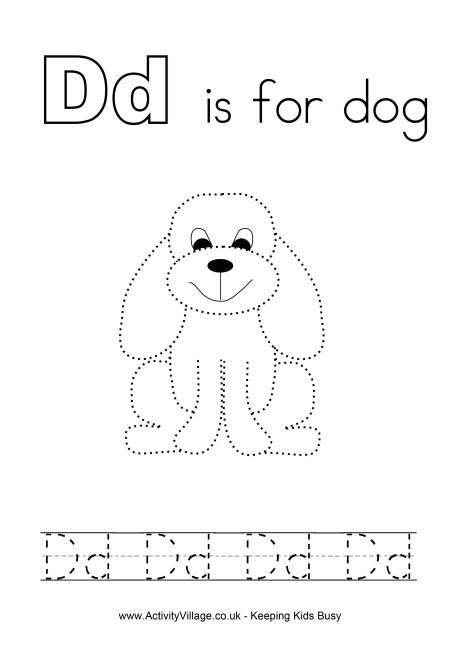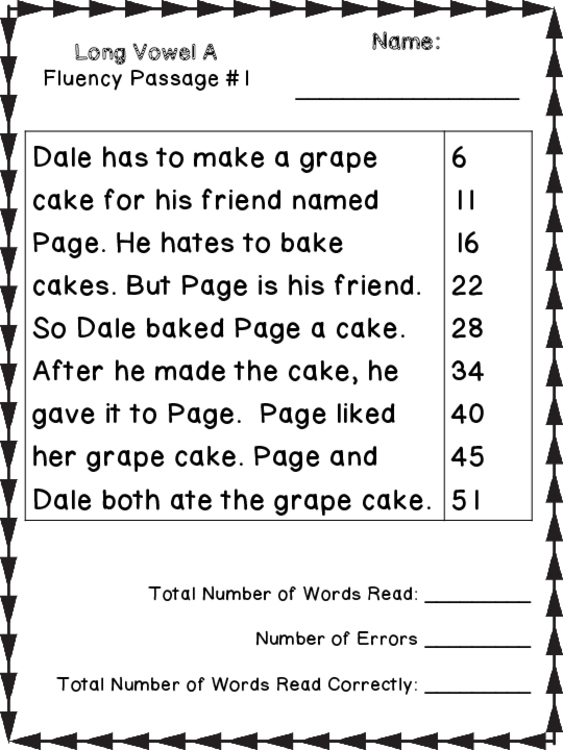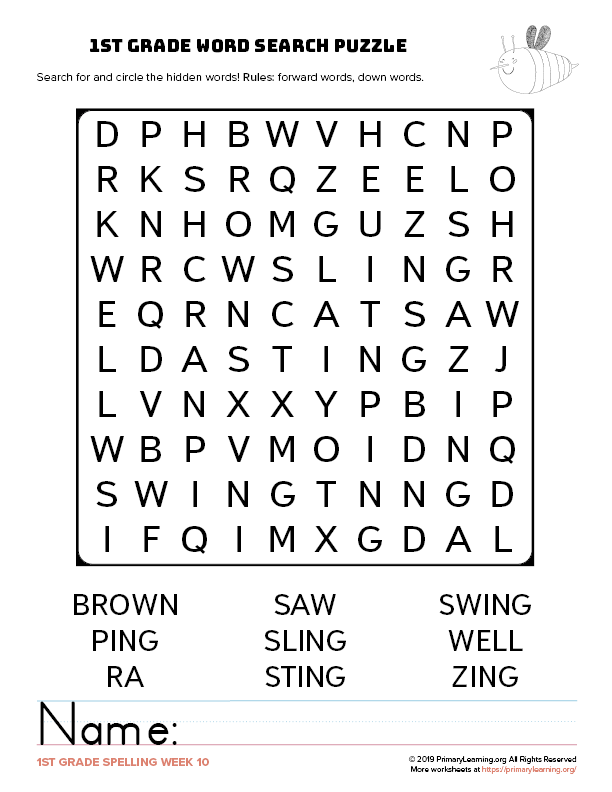Home »
Misc »
Math terms that start with k
Math terms that start with k
Learn Definition, Facts and Examples
The vocabulary of mathematics contains words that start with the letter ‘K’. There are a lot of words used in mathematics. It is important to have knowledge of the vocabulary of maths as it is helpful for us to know the terminologies and their meaning which are eventually helpful in grabbing concepts.
Math Words Starting with K
In this article, we will discuss some of the words that start with the letter ‘K’. The list of the words is provided with a detailed explanation of each word so that students can understand the meaning of the words and use them in maths.
List of Words
The list of words that start with the letter K is given below.
S.No. | Words |
1 | Kilogram |
2 | Kilometer |
3 | Kelvin
|
4 | Kilobyte |
5 | Key |
Let’s understand these terms in detail.![]()
Kilogram
When we go to the market we bought things in some kind of measurement. You may have heard the term kilogram which is a type of unit to measure weight. The kilogram can be written as kg. Hence it is a measure of mass. 1 Kilogram is equal to 1,000 grams.
Things That Weigh in Kg
Kilometer
A kilometer is used for the measurement of distance. 1 kilometer is equal to 1000 meters. Hence it is a metric unit of distance which can also be written as km.
Kelvin
Kelvin is a unit of measurement of temperature. Kelvin scale is used on some thermometers to measure temperature.
Kilobyte
It is a unit of data measurement for computers. 1 kilobyte equal to 1000 bytes. This is a very important concept for computer technology and digital electronics which you will learn in higher classes in depth.
1 kilobyte equal to 1000 bytes. This is a very important concept for computer technology and digital electronics which you will learn in higher classes in depth.
Key
A key in maths is defined as a list or note which describes the meaning of each symbol on a graph.
Conclusion
In this article the discussion about the math words that start with K is done. The list of words is provided as well words are explained in detail. Students are required to know these terminologies as it will help them to understand the complex concept of maths.
Mathwords A to Z
| | |
| index: click on a letter | | | | | | | | | | | | | | | |
| | | | | | | | | | | | | index: subject areas | | | | | | | | | |
| | |
|
| | |
AA Similarity AAS Congruence Abscissa Absolute Convergence Absolute Maximum Absolute Minimum Absolute Value Absolute Value of a Complex Number Absolute Value Rules Absolutely Convergent Acceleration Accuracy Acute Angle Acute Triangle Addition Rule Additive Inverse of a Matrix Additive Inverse of a Number Additive Property of Equality Adjacent Adjacent Angles Adjoint, Classical Adjugate Affine Transformation Aleph Null (א0) Algebra Algebraic Numbers Algorithm Alpha (Α α) Alternate Angles Alternate Exterior Angles | Alternate Interior Angles Alternating Series Alternating Series Remainder Alternating Series Test Altitude Altitude of a Cone Altitude of a Cylinder Altitude of a Parallelogram Altitude of a Prism Altitude of a Pyramid Altitude of a Trapezoid Altitude of a Triangle Amplitude Analytic Geometry Analytic Methods Angle Angle Bisector Angle of Depression Angle of Elevation Angle of Inclination of a Line Annulus Anticlockwise Antiderivative of a Function Antipodal Points Apex Apothem Approximation by Differentials ARC Arc Length of a Curve Arc of a Circle | arccos Arccos arccosec Arccosec arccot Arccot arccsc Arccsc arcsec Arcsec arcsin Arcsin arctan Arctan Area below a Curve Area between Curves Area of a Circle Area of a Convex Polygon Area of an Ellipse Area of an Equilateral Triangle Area of a Kite Area of a Parabolic Segment Area of a Parallelogram Area of a Rectangle Area of a Regular Polygon Area of a Rhombus Area of a Sector of a Circle Area of a Segment of a Circle Area of a Trapezoid Area of a Triangle | Area under a Curve Area Using Parametric Equations Area Using Polar Coordinates Argand Plane Argument of a Complex Number Argument of a Function Argument of a Vector Arithmetic Arithmetic Mean Arithmetic Progression Arithmetic Sequence Arithmetic Series Arm of an Angle Arm of a Right Triangle ASA Congruence Associative Asymptote Augmented Matrix Average Average Rate of Change Average Value of a Function Axes Axiom Axis of a Cylinder Axis of Reflection Axis of Rotation Axis of Symmetry Axis of Symmetry of a Parabola |
Back Substitution Base (Geometry) Base of an Exponential Expression Base of an Isosceles Triangle Base of a Trapezoid Base of a Triangle Bearing Bernoulli Trials | Beta (Β β) Between Biconditional Binomial Binomial Coefficients Binomial Coefficients in Pascal's Triangle Binomial Probability Formula Binomial Theorem | Bisect Bisector Boundary Value Problem Bounded Function Bounded Sequence Bounded Set of Geometric Points Bounded Set of Numbers Bounds of Integration | Box Box and Whisker Plot Boxplot Braces Brachistochrone Brackets |
Calculus Cardinal Numbers Cardinality Cardioid Cartesian Coordinates Cartesian Form Cartesian Plane Catenary Cavalieris Principle Ceiling Function Center of Mass Formula Center of Rotation Centers of a Triangle Central Angle Centroid Centroid Formula Cevas Theorem Cevian Chain Rule Change of Base Formula Check a Solution Chi (Χ χ) Chord Circle Circle Identities Circle Trig Definitions Circular Cone Circular Cylinder Circular Functions Circumcenter Circumcircle Circumference Circumscribable Circumscribed Circumscribed Circle Cis Classical Adjoint Clockwise Closed Interval Coefficient Coefficient Matrix Cofactor | Cofactor Matrix Cofunction Identities Coincident Collinear Column of a Matrix Combination Combination Formula Combinatorics Common Logarithm Common Ratio Commutative Comparison Test Compatible Matrices Complement of an Angle Complement of an Event Complement of a Set Complementary Angles Complex Conjugate Complex Fraction Complex Number Formulas Complex Numbers Complex Plane Composite Composite Number Composition Compound Fraction Compound Inequality Compound Interest Compounded Compounded Continuously Compression Compression of a Geometric Figure Compression of a Graph Compute Concave Concave Down Concave Up Concentric Conclusion Concurrent Conditional Conditional Convergence | Conditional Equation Conditional Inequality Conditional Probability Cone Cone Angle Congruence Tests for Triangles Congruent Conic Sections Conjecture Conjugates Conjugate Pair Theorem Conjunction Consecutive Interior Angles Consistent System of Equations Constant Constant Function Constant Term Continued Sum Continuous Continuous Compounding Continuous Function Continuously Compounded Interest Continuously Differentiable Function Contrapositive Contraction Contraction of a Geometric Figure Converge Converge Absolutely Converge Conditionally Convergence Tests Convergent Sequence Convergent Series Converse Convex Coordinate Geometry Coordinate Plane Coordinates Coplanar Corollary Correlation Correlation Coefficient Corresponding | cos cos-1 Cos-1 cosec cosec-1 Cosec-1 cosecant cosine cot cot-1 Cot-1 Cotangent Coterminal Countable Countably Infinite Counterclockwise Counterexample Counting Numbers CPCFC CPCTC Cramers Rule Critical Number Critical Point Critical Value Cross Product csc csc-1 Csc-1 ctg ctg-1 Ctg-1 Cube Cube Root Cubic Polynomial Cuboid Curly d Curve Curve Sketching Cusp Cycloid Cylinder Cylindrical Shell Method |
De Moivres Theorem Decagon Deciles Decreasing Function Definite Integral Definite Integral Rules Degenerate Degenerate Conic Sections Degree (angle measure) Degree of a Polynomial Degree of a Term Del Operator Deleted Neighborhood Delta (Δ δ) Denominator Dependent Variable Derivative Derivative of a Power Series Derivative Rules | Descartes' Rule of Signs Determinant Diagonal Matrix Diagonal of a Polygon Diameter Diametrically Opposed Difference Difference Identities Difference Quotient Differentiable Differential Differential Equation Differentiation Differentiation Rules Digit Dihedral Angle Dilation Dilation of a Geometric Figure Dilation of a Graph | Dimensions Dimensions of a Matrix Direct Proportion Direct Variation Directly Proportional Directrices of an Ellipse Directrices of a Hyperbola Directrix of a Parabola Discontinuity Discontinuous Function Discrete Discriminant of a Quadratic Disjoint Events Disjoint Sets Disjunction Disk Disk Method Distance Formula Distance from a Point to a Line | Distinct Distribute Distributing Rules Diverge Divergent Sequence Divergent Series Dodecagon Dodecahedron Domain Domain of Definition Dot Product Double Angle Identities Double Cone Double Number Identities Double Root Doubling Time |
e Eccentricity Echelon Form of a Matrix Edge of a Polyhedron Element of a Matrix Element of a Set Ellipse Ellipsoid Elliptic Geometry Empty Set End Behavior Epsilon (Ε ε) Equality, Properties of Equation | Equation of a Line Equation Rules Equiangular Triangle Equidistant Equilateral Triangle Equivalence Properties of Equality Equivalence Relation Equivalent Systems of Equations Essential Discontinuity Eta (Η η) Euclidean Geometry Euler Line Euler's Formula Euler's Formula (Polyhedra) | Evaluate Even Function Even Number Event Exact Values of Trig Functions Exclusive (interval) Exclusive or Expand Expansion by Cofactors Expected Value Experiment Explicit Differentiation Explicit Formula of a Sequence Explicit Function | Exponent Exponent Rules Exponential Decay Exponential Function Exponential Growth Exponential Model Exponentiation Expression Exterior Angle of a Polygon Extraneous Solution Extreme Value Theorem Extreme Values of a Polynomial Extremum |
Face of a Polyhedron Factor of an Integer Factor of a Polynomial Factor Theorem Factor Tree Factorial Factoring Rules Falling Bodies Fibonacci Sequence Finite | First Derivative First Derivative Test First Order Differential Equation First Quartile Five Number Summary Fixed Flip Floor Function Focal Radius Foci of an Ellipse | Foci of a Hyperbola Focus Focus of a Parabola FOIL Method Formula Fractal Fraction Fraction Rules Fractional Equation Fractional Exponents | Fractional Expression Frequency of a Periodic Function Frequency of Periodic Motion Frustum of a Cone or Pyramid Function Function Operations Fundamental Theorem of Algebra Fundamental Theorem of Arithmetic Fundamental Theorem of Calculus |
Gambling Odds Gamma (Γ γ) Gauss-Jordan Elimination Gaussian Elimination Gaussian Integer GCF General Form for the Equation of a Line Geometric Figure Geometric Mean | Geometric Progression Geometric Sequence Geometric Series Geometric Solid Geometry GLB Glide Glide Reflection Global Maximum | Global Minimum Golden Mean Golden Ratio Golden Rectangle Golden Spiral Googol Googolplex Graph of an Equation or Inequality Graphic Methods | Gravity Great Circle Greatest Common Factor Greatest Integer Function Greatest Lower Bound Greek Alphabet |
Half Angle Identities Half-Closed Interval Half-Life Half Number Identities Half-Open Interval Harmonic Mean Harmonic Progression Harmonic Sequence Harmonic Series Height Height of a Cone Height of a Cylinder Height of a Parallelogram | Height of a Prism Height of a Pyramid Height of a Trapezoid Height of a Triangle Helix Heptagon Heros Formula Herons Formula Hexagon Hexahedron High Quartile Higher Derivative Higher Quartile | HL Congruence HL Similarity Hole Homogeneous System of Equations Horizontal Horizontal Compression Horizontal Dilation Horizontal Ellipse Horizontal Hyperbola Horizontal Line Equation Horizontal Line Test Horizontal Parabola Horizontal Reflection | Horizontal Shift Horizontal Shrink Horizontal Stretch Horizontal Translation Hyperbola Hyperbolic Geometry Hyperbolic Trig Hyperbolic Trigonometry Hypotenuse Hypothesis |
i Icosahedron Identity (Equation) Identity Function Identity Matrix Identity of an Operation if and only if If-Then Statement iff Image of a Transformation Imaginary Numbers Imaginary Part Implicit Differentiation Implicit Function or Relation Impossible Event Improper Fraction Improper Integral Improper Rational Expression Incenter Incircle Inclusive (interval) Inclusive or Inconsistent System of Equations Increasing Function Indefinite Integral Indefinite Integral Rules | Independent Events Independent Variable Indeterminate Expression Indirect Proof Induction Inequality Inequality Rules Infinite Infinite Geometric Series Infinite Limit Infinite Series Infinitesimal Infinity Inflection Point Initial Side of an Angle Initial Value Problem Inner Product Inradius Inscribed Angle in a Circle Inscribed Circle Instantaneous Acceleration Instantaneous Rate of Change Instantaneous Velocity Integers Integrable Function Integral | Integral Methods Integral of a Function Integral of a Power Series Integral Rules Integral Table Integral Test Integral Test Remainder Integrand Integration Integration by Parts Integration by Substitution Integration Methods Interest Interior Interior Angle Intermediate Value Theorem Interquartile Range Intersection Interval Interval Notation Interval of Convergence Invariant Inverse Inverse Cosecant Inverse Cosine Inverse Cotangent | Inverse Function Inverse of a Conditional Inverse of a Matrix Inverse of an Operation Inverse Proportion Inverse Secant Inverse Sine Inverse Tangent Inverse Trig Inverse Trig Functions Inverse Trigonometry Inverse Variation Inversely Proportional Invertible Matrix Iota (Ι ι) IQR Irrational Numbers Isometry Isosceles Trapezoid Isosceles Triangle Iterative Process IVP IVT |
Joint Variation | Jump Discontinuity | | |
L'Hpital's Rule Lambda (Λ λ) Lateral Area Lateral Surface Area Lateral Surface/Face Latus Rectum Law of Cosines Law of Sines LCM Leading Coefficient Leading Term Least Common Denominator Least Common Multiple Least Integer Function Least-Squares Fit Least-Squares Line | Least-Squares Regression Equation Least-Squares Regression Line Least Upper Bound Leg of an Isosceles Triangle Leg of a Right Triangle Leg of a Trapezoid Lemma Lemniscate Like Terms Limaon Limit Limit Comparison Test Limit from Above Limit from Below Limit from the Left Limit from the Right | Limit Involving Infinity Limit Test for Divergence Limits of Integration Line Line Segment Linear Linear Combination Linear Equation Linear Factorization Linear Fit Linear Inequality Linear Pair of Angles Linear Polynomial Linear Programming Linear Regression Linear System of Equations | Local Behavior Local Maximum Local Minimum Locus Logarithm Logarithm Rules Logarithmic Differentiation Logistic Growth Long Division of Polynomials Lower Bound Lower Quartile LSRL LUB |
Maclaurin Series Magnitude Magnitude of a Vector Main Diagonal of a Matrix Major Arc Major Axis of an Ellipse Major Axis of a Hyperbola Major Diameter of an Ellipse Mathematical Model Matrix Matrix Addition Matrix Element Matrix Inverse Matrix Multiplication Matrix of Cofactors Matrix Subtraction Maximize | Maximum of a Function Mean Mean of a Random Variable Mean Value Theorem Mean Value Theorem for Integrals Measure of an Angle Measurement Median of a Set of Numbers Median of a Trapezoid Median of a Triangle Member of an Equation Menelauss Theorem Mensuration Mesh Midpoint Midpoint Formula Min/Max Theorem | Minimize Minimum of a Function Minor Arc Minor Axis of an Ellipse Minor Axis of a Hyperbola Minor Diameter of an Ellipse Minute Mixed Number Mbius Strip Mode Model Modified Boxplot Modular Arithmetic Modular Equivalence Modular Equivalence Rules Modular Numbers Modulo n | Modulus of a Complex Number Modus Ponens Modus Tolens Moment Monomial Mu (Μ μ) Multiplication Rule Multiplicative Inverse of a Matrix Multiplicative Inverse of a Number Multiplicative Property of Equality Multiplicity Multivariable Multivariable Analysis Multivariable Calculus Multivariate Mutually Exclusive MVT |
n-Dimensional n Dimensions Natural Domain Natural Logarithm Natural Numbers Negative Direction Negative Exponents Negative Number Negative Reciprocal Negatively Associated Data Neighborhood | Newton's Method n-gon No Slope Non-Adjacent Nonagon Noncollinear Non-Convex Non-Euclidean Geometry Noninvertible Matrix Nonnegative Nonnegative Integers | Non-Overlapping Sets Nonreal numbers Nonsingular Matrix Nontrivial Nonzero Norm of a Partition Norm of a Vector Normal Normalizing a Vector nth Degree Taylor Polynomial nth Derivative | nth Partial Sum nth Root nth Root Rules n-tuple Nu (Ν ν) Null Set Number Line Numerator |
Oblate Spheroid Oblique Oblique Asymptote Oblique Cone Oblique Cylinder Oblique Prism Oblique Pyramid Obtuse Angle Obtuse Triangle Octagon | Octahedron Octants Odd/Even Identities Odd Function Odd Number Odds Odds Against Odds in Favor Odds in Gambling Omega (Ω ω) | Omicron (Ο ο) One Dimension One-Sided Limit One-to-One Function Open Interval Operations on Functions Opposite Reciprocal Order of a Differential Equation Ordered Pair Ordered Triple | Ordinal Numbers Ordinary Differential Equation Ordinate Origin Orthocenter Orthogonal Outcome Outlier Oval Overdetermined System of Equations |
p-series Paired Data Pappuss Theorem Parabola Parallel Cross Sections Parallel Lines Parallel Planes Parallel Postulate Parallelepiped Parallelogram Parameter (algebra) Parametric Derivative Formulas Parametric Equations Parametric Integral Formula Parametrize Parent Functions Parentheses Partial Derivative Partial Differential Equation Partial Fractions Partial Sum of a Series Partition of an Interval Partition of a Positive Integer Partition of a Set Pascal's Triangle Pentagon Per Annum | Percentile Perfect Number Perfect Square Perimeter Period of a Periodic Function Period of Periodic Motion Periodic Function Periodic Motion Periodicity Identities Permutation Permutation Formula Perpendicular Perpendicular Bisector Phase Shift Phi (Φ φ) Pi (Π π) Piecewise Continuous Function Piecewise Function Pinching Theorem Plane Plane Figure Plane Geometry Platonic Solids Plus/Minus Identities Point Point of Division Formula Point of Symmetry | Point-Slope Equation of a Line Polar Angle of a Complex Number Polar Axis Polar Conversion Formulas Polar Coordinates Polar Curves Polar Derivative Formulas Polar Equation Polar Form of a Complex Number Polar Integral Formula Polar-Rectangular Conversion Formulas Polygon Polygon Interior Polyhedron Polynomial Polynomial Facts Polynomial Long Division Population Positive Direction Positive Number Positive Series Positively Associated Data Postulate Power Power Rule Power Series Power Series Convergence | Precision Pre-Image of a Transformation Prime Factorization Prime Number Principal Prism Probability Product Product Rule Product to Sum Identities Projectile Motion Prolate Spheroid Proof by Contradiction Proper Fraction Proper Rational Expression Proper Subset Properties of Equality Proportional Psi (Ψ ψ) Pure Imaginary Numbers Pyramid Pythagorean Identities Pythagorean Theorem Pythagorean Triple |
Q1 Q3 QED Quadrangle Quadrantal Angle | Quadrants Quadratic Quadratic Equation Quadratic Formula Quadratic Polynomial | Quadrilateral Quadruple Quartic Polynomial Quartiles Quintic Polynomial | Quintiles Quintuple Quotient Quotient Rule |
Radian Radical Radical Rules Radicand Radius of a Circle or Sphere Radius of Convergence Range Ratio Ratio Identities Ratio Test Rational Equation Rational Exponents Rational Expression Rational Function Rational Numbers Rational Root Theorem Rational Zero Theorem Rationalizing Substitutions Rationalizing the Denominator Ray Real Numbers Real Part Reciprocal | Reciprocal Identities Reciprocal Rule Rectangle Rectangular Coordinates Rectangular Form Rectangular Parallelepiped Recursive Formula of a Sequence Reduce a Fraction Reduced Row-Echelon Form of a Matrix Reference Angle Reflection Reflexive Property Regression Regression Equation Regression Line Regular Dodecahedron Regular Hexahedron Regular Icosahedron Regular Octahedron Regular Polygon Regular Polyhedra Regular Prism Regular Pyramid | Regular Right Prism Regular Right Pyramid Regular Tetrahedron Related Rates Relation Relative Maximum Relative Minimum Relatively Prime Remainder Remainder of a Series Remainder Theorem Removable Discontinuity Residual Restricted Domain Restricted Function Rho (Ρ ρ) Rhombus Riemann Sum Riemannian Geometry Right Angle Right Circular Cone Right Circular Cylinder Right Cone | Right Cylinder Right Prism Right Pyramid Right Regular Prism Right Regular Pyramid Right Square Parallelepiped Right Square Prism Right Triangle RMS Rolle's Theorem Root Mean Square Root of an Equation Root of a Number Root Rules Root Test Rose Curve Rotation Rounding a Number Row-Echelon Form of a Matrix Row of a Matrix Row Operations Row Reduction RPM |
SAA Congruence Sample Space Sandwich Theorem SAS Congruence SAS Similarity Satisfy Scalar Scalar Product Scale Factor Scalene Triangle Scatterplot Scientific Notation sec sec-1 Sec-1 Secant (Trig Function) Secant Line Second Second Derivative Second Derivative Test Second Order Critical Point Second Order Differential Equation Sector of a Circle Segment Segment of a Circle Self-Similarity Semicircle Semiperimeter Separable Differential Equation Sequence Sequence of Partial Sums Series Series Rules Set | Set Braces Set-Builder Notation Set Complement Set Intersection Set Subtraction Set Union Shell Method Shift Shrink Side of an Angle Side of an Equation Side of a Polygon Sigma (Σ σ) Sigma Notation Significant Digits Similar Similarity Tests for Triangles Simple Closed Curve Simple Harmonic Motion (SHM) Simple Interest Simplify Simpson's Rule Simultaneous Equations sin sin-1 Sin-1 Sine Singular Matrix Sinusoid Skew Lines Slant Height Slope-Intercept Equation of a Line Slope of a Curve Slope of a Line | SOHCAHTOA Solid Solid Geometry Solid of Revolution Solution Solution Set Solve Solve Analytically Solve Graphically Special Angles Speed Sphere Spherical Trigonometry Spheroid Spiral Spurious Solution Square Square Matrix Square Root Square Root Rules Square System of Equations Squeeze Theorem SSA SSS Congruence SSS Similarity Standard Form for the Equation of a Line Standard Position Stem-and-Leaf Plot Stemplot Step Discontinuity Step Function Stewart's Theorem Straight Angle Stretch | Strict Inequality Subset Substitution Method Subtraction of Sets Sum Sum/Difference Identities Sum Rule for Probability Sum to Product Identities Superset Supplement Supplementary Angles Surd Sure Event Surface Surface Area Surface Area of a Surface of Revolution Surface of Revolution Symmetric Symmetric about the Origin Symmetric about the x-axis Symmetric about the y-axis Symmetric across the Origin Symmetric across the x-axis Symmetric across the y-axis Symmetric Property Symmetric with Respect to the Origin Symmetric with Respect to the x-axis Symmetric with Respect to the y-axis Synthetic Division Synthetic Substitution System of Equations System of Inequalities System of Linear Equations |
Table of Integrals Takeout Angle tan tan-1 Tan-1 Tangent (Trig Function) Tangent Line Tau (Τ τ) Tautochrone Taylor Polynomial Taylor Series Taylor Series Remainder Term Terminal Side of an Angle Tessellate | Tetrahedron Theorem Theorem of Menelaus Theorem of Pappus Theta (Θ θ) Third Quartile Three Dimensional Coordinates Three Dimensions Tilted Asymptote Toolkit Functions Torus Transcendental Numbers Transformations Transitive Property of Equality Transitive Property of Inequalities | Translation Transpose of a Matrix Transversal Trapezium Trapezoid Trapezoid Rule Triangle Triangle Congruence Tests Triangle Inequality Triangle Inequality with Absolute Value Triangle Similarity Tests Triangulation Trichotomy Trig Trig Functions | Trig Identities Trig Substitution Trig Values of Special Angles Trigonometry Trinomial Triple Triple Root Triple (Scalar) Product Trivial Truncated Cone or Pyramid Truncated Cylinder or Prism Truncating a Number Twin Primes Two Dimensions Two Intercept Form for the Equation of a Line |
u-Substitution Unbounded Set of Numbers Uncountable Uncountably Infinite | Undecagon Undefined Slope Underdetermined System of Equations Uniform | Union Unit Circle Unit Circle Trig Definitions Unit Vector | Upper Bound Upper Quartile Upsilon (Υ υ) |
Variable Varignon Parallelogram of a Quadrilateral Vector Vector Calculus Velocity Venn Diagrams Verify a Solution Vertex | Vertex of an Ellipse Vertex of a Hyperbola Vertex of a Parabola Vertical Vertical Angles Vertical Compression Vertical Dilation Vertical Ellipse | Vertical Hyperbola Vertical Line Equation Vertical Line Test Vertical Parabola Vertical Reflection Vertical Shift Vertical Shrink Vertical Stretch | Vertical Translation Vertices of an Ellipse Vertices of a Hyperbola Vinculum Volume Volume by Parallel Cross Sections |
Washer Washer Method | Wavelength Weighted Average | Whole Numbers | Work |
x-intercept | x-y Plane | x-z Plane | Xi (Ξ ξ) |
z-intercept Zero | Zero Dimensions Zero Matrix | Zero of a Function Zero Slope | Zero Vector Zeta (Ζ ζ) |
|
| | this page updated 19-jul-17
Mathwords: Terms and Formulas from Algebra I to Calculus
written, illustrated, and webmastered by Bruce Simmons
Copyright © 2000 by Bruce Simmons
All rights reserved | |
|
Mathematical term, 8 letters, first letter A - crossword puzzles and crossword puzzles
argument
The word "argument" consists of 8 letters:
- first letter A
- second letter P
- third letter G
- letter U
- fifth letter M
- sixth letter E
- seventh letter H
- eighth letter T
Look up the meaning of the word "argument" in the dictionary.
Alternative definitions for the word "argument", found in total — 21 options:
- Clever name for a common argument
- Mathematics independent variable
- In mathematics, an independent variable whose change determines the change in another quantity, called a function
- Variable on which another variable depends
- Strong argument
- Strong argument in dispute
- Argument
- Argument for truth
- Evidence in dispute
- Proof, argument
- Fact Friend
- Another name for argument
- Logical argument
- Logical argument serving as the basis of evidence
- M. lat. reason, proof, persuasion, argument. To argue that, to prove, to state conclusively, to bring. Argumentation, argument, evidence-based reasoning
nine0027 Independent variable - Proof basis
- Evidence base
- Reason, argument
- Say "proof" in Latin
- Verbal proof
Other questions:
- No longer a boy, but not yet a man
- Extinct marine arthropod
- English writer
nine0027 Rival dollar - High sensitivity electrical measuring instrument
- Russian pop star
- Poor little man
- National Park in Ethiopia
- Italian sheep's milk cheese
- Science of the water cycle
| Question 1 of 20 The place where the battle took place in 1792, France-Austria nine0097 |
| zhulan | giraffe |
| Zhigan | geman |
Just searched: est o n e ts now lovogru now h a s n i k now dulkaa now heat now tzoaccha now check now rezupki now u n d r i s k 1 second ago pymesr 1 second ago glafio 1 second ago o pr s s 1 second ago send money tomorrow 1 second ago eaalgrm 1 second ago load 1 second ago
Dictionary of mathematical terms
Dictionary
Annotation - a brief description of the document, explaining its content, purpose, form, and other features.
Arithmetic is one of the branches of mathematics that studies the simplest properties of numbers and operations performed on numbers. In the elementary course of mathematics, four arithmetic operations are used: addition, subtraction, multiplication, division.
Infinity is something (the number of objects, the length of the line, the number of figures in the number entry) that has no limit, no end.
Two-digit numbers are natural numbers containing two digits (ones digit and tens ones digit).
Decimal number system is a way of designating numbers based on the number 10. The decimal number system is called positional (the number depends on the position, place of the digit in the number entry) and uses 10 Arabic numerals: 0,1,2, 3,4,5,6,7,8,9.
Ten - the sum of ten units is ten. The phrase "numbers of the first ten" refers to numbers from 1 to 10 inclusive.
Unit is the smallest natural number in any category. Natural numbers are positive integers, so among them 1 (one) is the smallest number (the number 0 does not apply to natural numbers).
Class is the combination of units of three digits.
The name of the class, as well as the division of the number into classes, starts from right to left from the lowest class to the highest. A space is placed between the classes in the number entry to simplify reading. nine0003
First class. The first three digits on the right (1st digit - units of units, 2nd digit - tens of units, 3rd digit - hundreds of units) are called classes of units. The name of this class is absent in the notation of the number and in the reading.
Second class. 4th digit - thousands digit, 5th digit - tens of thousands digit, 6th digit - hundreds of thousands digit are combined into a class of thousands.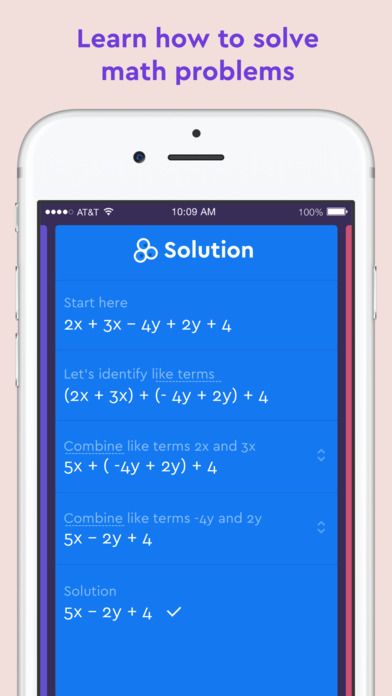 When reading and writing a number, the class name is mandatory after the sixth digit. 13133 - thirteen thousand ...
When reading and writing a number, the class name is mandatory after the sixth digit. 13133 - thirteen thousand ...
Third class. The 7th, 8th, 9th digits from the right constitute the class of millions. 7th digit is the digit of units of millions, 8th digit is the digit of tens of millions, 9th digit is the digit of hundreds of millions. When reading and writing, the name of the class must be after the ninth digit. 250 000 001 - two hundred and fifty million ...
There are 4, 5, 6, 7, 8, etc. classes (see table).
| units | Concentr is the area of considered numbers united by common characteristics. In the elementary course of mathematics, the numbering of non-negative integers is studied by concentres. The following concentres are distinguished: ten, one hundred, one thousand, multi-digit numbers.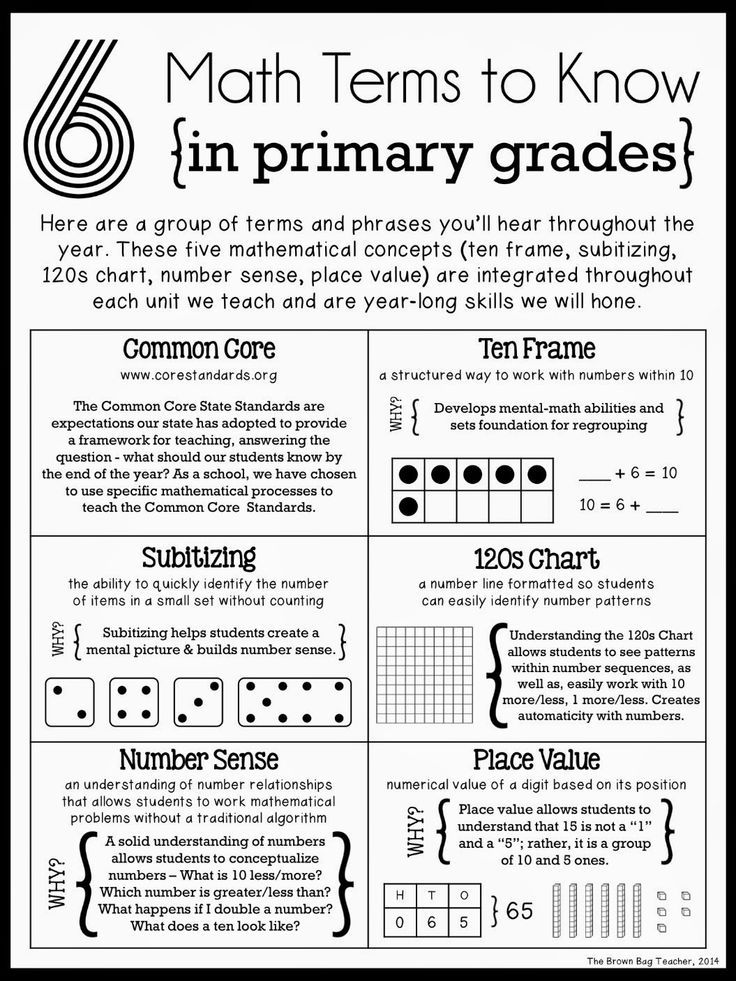 Less than is the characteristic of one value in relation to another value when they are compared. The “less than” relation ( The natural number is a positive integer. A natural number can be denoted by the Latin letter “en” (N). The number acts as a general characteristic of a class of equivalent sets and is realized in the process of establishing a one-to-one correspondence between elements of different sets .In the initial course of mathematics, various ways of forming a number, counting, measuring, performing arithmetic operations are revealed.Natural numbers create number series , in which the number 1 is the smallest number, and the largest number is missing, because the series of natural numbers can be continued indefinitely. The natural series is a series of integers starting with the number 1 and continuing to infinity. Part of this series of numbers is also a natural series.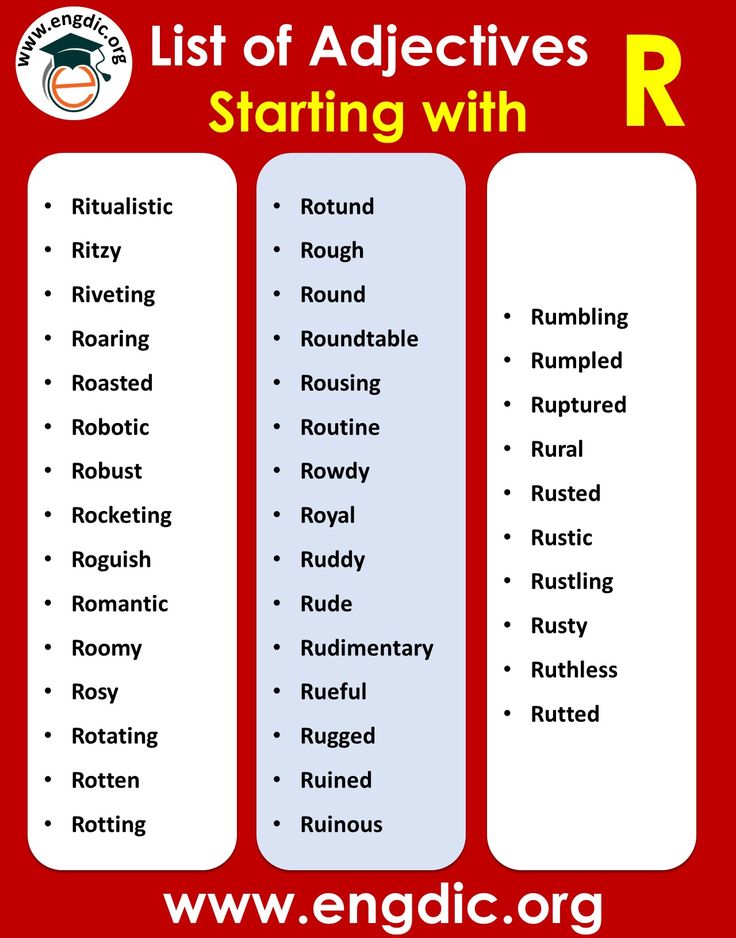 Non-digit number is a number consisting of units of different digits (3, 13, 337, 40800). Numbering - a set of methods for designating and naming natural numbers or as a way of connecting numbers to designate a number. nine0003 Single-digit numbers are numbers consisting of one digit of the first digit of the first class of units. There are only nine single-digit numbers: 1, 2, 3, 4, 5, 6, 7, 8, 9. The largest single-digit number is 9, the smallest is 1. represent any number. Positional principle or Local principle is used for numbering. This is a way of representing numbers, in which different numbers can be denoted by the same digits, depending on the place occupied by the digits when writing the number. nine0003 The ordinal number indicates the place of the item in the row indicates the order of the item in the count and answers the question “which one?”, “Which one?”.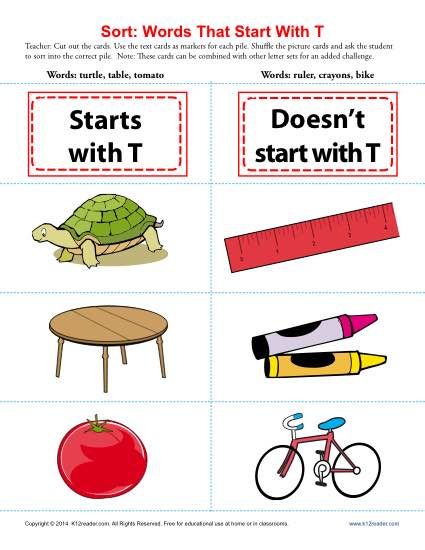 The ordinal and quantitative characteristics of a number are closely related. The ordinal and quantitative characteristics of a number are closely related. Continuity is a connection between phenomena, objects in the process of development, when the new replaces the old, while retaining some of its elements. Continuity is characterized by the consistency and systematic arrangement of the material, the comprehension of what has been learned at a higher level. nine0003 The difference is the result of calculating the subtraction action. Digit units . Numbers 1, 10, 100, 1000… are called bit units. 1-unit of the discharge of units; 10-unit of the discharge of tens of units; 100-unit digit of hundreds of units; 1000 is a unit of thousands place. Discharge terms . The single digits are the digits for each digit. The product of a digit of a digit by a digit unit is called a digit summand. nine0003 574263=500000+70000+4000+200+60+3 Each number, starting with two digits, can be represented by bit terms.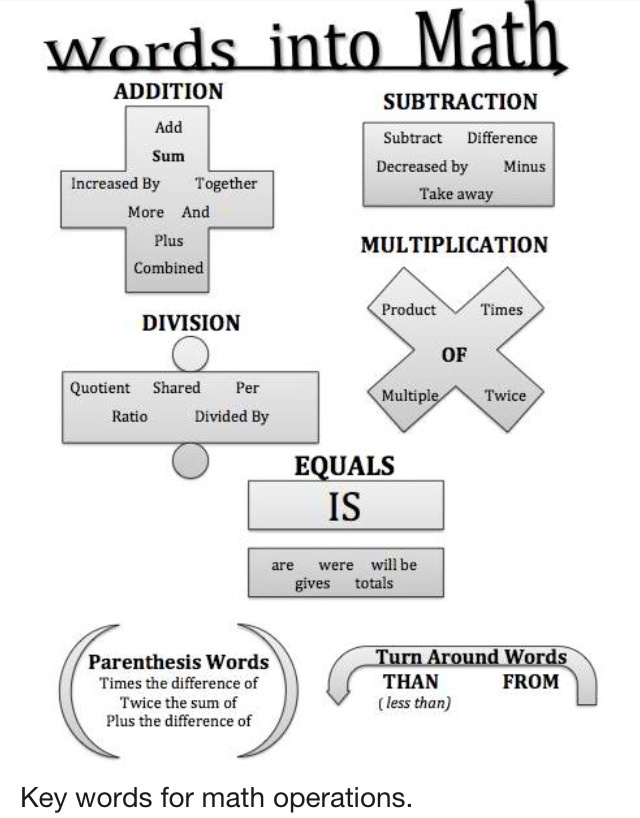 Digit number is a number consisting of units of one digit. (20, 500, 20000…) Digits is the place occupied by a digit in the notation of a number in the positional number system. The number of places occupied by digits is the number of digits of the number. Abstract – scientific work, consisting of an introductory part, main text (15-20 pages), final part (conclusion) and a list of references (at least 10-15 sources) The number system is a set of characters, rules of operations and the order in which these characters are written when forming a number. Account is considered as an operation of establishing a one-to-one correspondence between two sets (the number of objects and the word - numeral). It is necessary to distinguish between mechanical and conscious counting. Mechanical account - mechanical, deliberately unregulated naming of numbers in direct and reverse order.

|
 1 kilobyte equal to 1000 bytes. This is a very important concept for computer technology and digital electronics which you will learn in higher classes in depth.
1 kilobyte equal to 1000 bytes. This is a very important concept for computer technology and digital electronics which you will learn in higher classes in depth.


 When reading and writing a number, the class name is mandatory after the sixth digit. 13133 - thirteen thousand ...
When reading and writing a number, the class name is mandatory after the sixth digit. 13133 - thirteen thousand ... 


 The ordinal and quantitative characteristics of a number are closely related.
The ordinal and quantitative characteristics of a number are closely related. 

